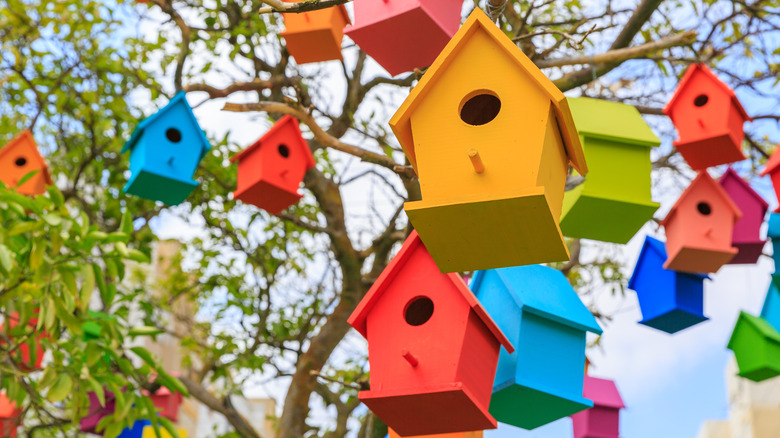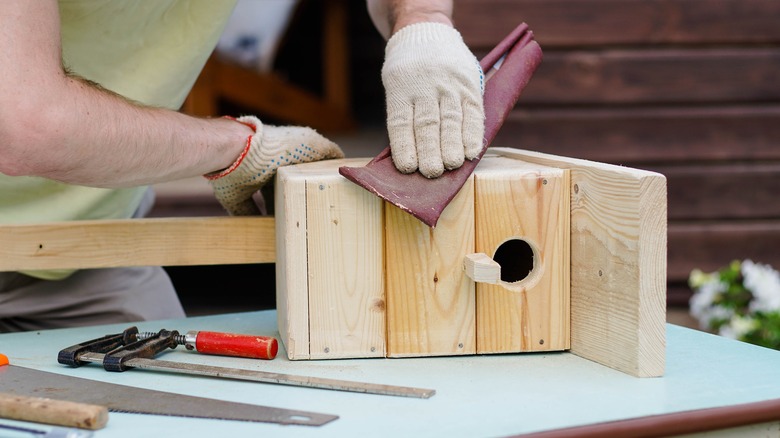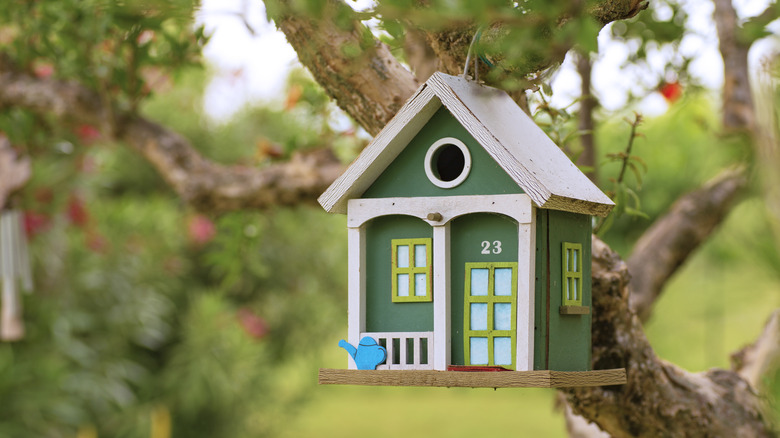Why The Size Of The Hole In Your Birdhouse Matters
Even if you are not a self-proclaimed birder hunting down rare examples and sharing photos on social media, you might still enjoy putting up a birdhouse or two to attract birds to your garden or yard. It's important, however, whether you're constructing a birdhouse or buying one pre-built, to get the hole size just right. When too small, the birds you want to attract won't be able to enter the house but insects like wasps and bees certainly can make a home there. Making the birdhouse hole too big, on the other, offers a spot for bullying birds to take up residence along with other unwanted pests and predators.
The danger with bullies like European starlings and house sparrows is that these non-native species can take over birdhouses, pushing out the inhabitants or, even worse, killing them. You can also end up with birds that aren't as pleasant to watch or provide a home for large snakes, pesky squirrels, and various rodents instead of your fine feathered friends if the hole in your birdhouse is the wrong size.
Ensuring the right size of a birdhouse hole
The key to knowing how big the hole in your birdhouse should be means figuring out the type of birds you want to reside there. That requires getting familiar with the various species that nest in your area in the spring or make a home there during the winter months. Many state parks and wildlife departments include this type of information on their websites so that's a good point of departure.
The next step is consulting a chart to find the correct dimensions for the hole in your birdhouse. For instance, a tufted titmouse needs a hole measuring about 1 1/4 inches wide, while, a red-headed woodpecker requires a slightly larger birdhouse hole of 2 inches; this hole should also be about 6 to 11 inches above the birdhouse's floor. Yes, where a hole is placed and how far it is from the bottom of the birdhouse makes a difference as well. Take those aspects into consideration, along with the overall size of the birdhouse by consulting a size chart, if you are completing a do-it-yourself project.
Hole sizes in premade birdhouses
Not everyone's up for taking out the woodworking tools to construct a birdhouse. No worries; there are plenty of options for purchasing one ready-made. Many are specially constructed for certain bird types like purple martins or wrens, and this will be noted in online listings or on a label attached to the birdhouse. You'll know the hole sizes should be just right for those types of birds when purchasing one of these.
If you're buying a birdhouse at a craft fair or discount store, though, the type of bird it's supposed to accommodate may not be as clear. In the instance of some birdhouses, they're actually made for decorative purposes rather than providing a home for a nest or wintering birds. Be sure to measure the hole, as well as its placement and the overall size of the house, before making a purchase. Taking a little extra time to get the hole in your birdhouse just right will help you achieve your birding goals without creating an unwanted habitat for other critters that might frequent your yard.


